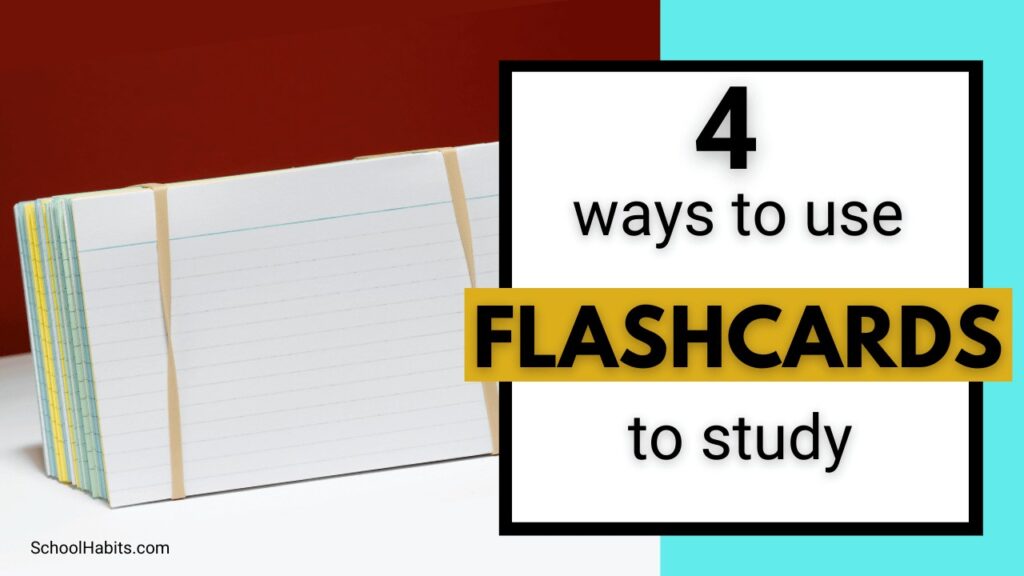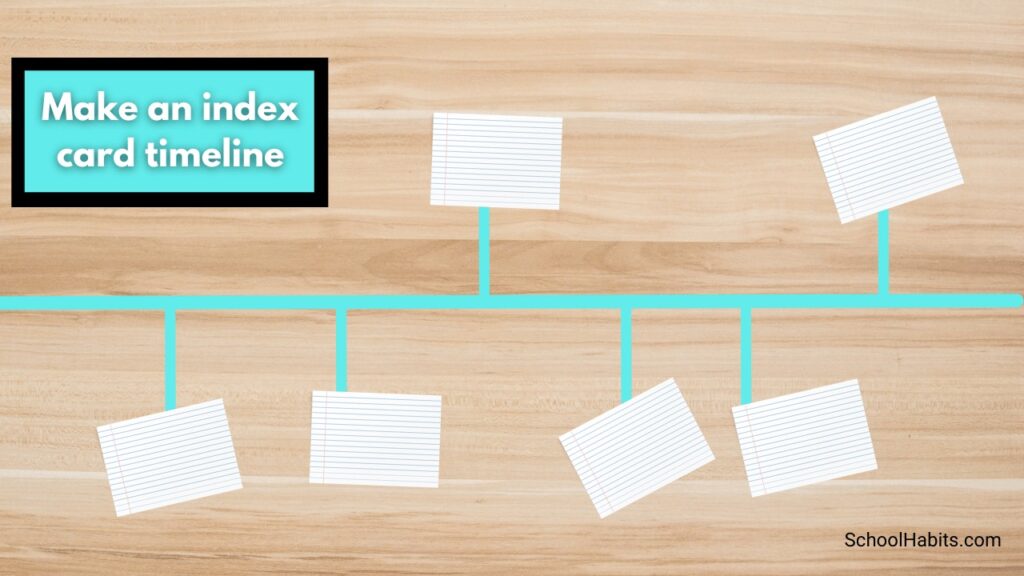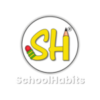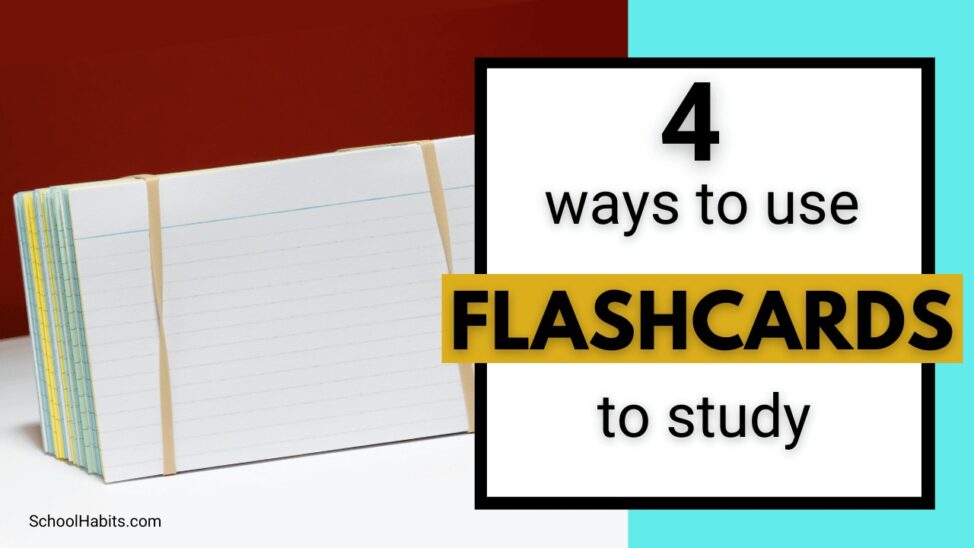By Katie Azevedo, M.Ed.

Flashcards are one of the most inexpensive, easy-to-find, and effective study tools you can possibly use. Yeah, I know there are approximately one bazillion cool apps and digital study websites available now, but I stand by my claim that old-school flashcards beat them all.
Why you should use flashcards to study
Flashcards are an amazing study tool for the following reasons:
- Flashcards are a two-step process: First you must make them, and then you study from them. This two-step process increases the amount of information you retain.
- You can study the flashcards from both sides. Doing so improves your understanding of the material.
- Making and using flashcards is a good study method for all learning styles: visual, kinesthetic and auditory (if you have someone test you aloud).
4 ways to use flashcards to study
1. Vocabulary
This is probably the most common use of flashcards. Obviously, you would put your vocabulary word on one side and the definition on the other. Tip: make sure you put the definition in your own words so you learn it quicker. You could also add a cue to the card, such as a mnemonic device or a picture. Here’s another study strategy for vocabulary words.
2. Questions and Answers
Another way to use flashcards to study is to put a question on one side and the answer on the other. This strategy works well for history and science classes, although you could really make it work for all types of content. Where do you get the questions? From your study guide, textbook, teacher, notes, worksheets, class handouts, etc. For example, if your test is on WWII, you could put “What were 3 causes of WWII?” on one side and then list out the answer on the other side. Or you could write “What were two primary themes of To Kill a Mockingbird?” on one side, and the answer on the other side.
3. Timelines
Using flashcards to study sequential events is a great idea. This would be helpful in history classes if you’re studying a series of events during a certain time period, or even if you’re studying the plot of a book. Here’s how you would use flashcards to study time-based events:
- For events that have dates: put the date on one side of the card and the event on the other.
- For events that don’t have dates, such as plot points in a story: write the numbers 1- whatever (however many events you’re studying) on one side, and write the events on the other side.
- Once you’ve made your cards, scramble them and then try to arrange them in order on a flat surface.

4. Grouping Concepts
This use for flashcards is a little less known than, say, method 1 (vocabulary), but it’s terrific for making connections between concepts. Remember, the primary way we learn new information is by connecting it to something we already know – which is the reason this strategy is so effective. Here’s how you can use flashcards to study by grouping concepts together:
- If you’re studying vocabulary, see if you can group similar words together. You could make separate piles for positive, negative and neutral words, or you could simply group together words with similar definitions.
- If you’re studying science concepts, like the parts of a cell, then put each part on a flashcard and form groups based on common characteristics of each part.
- If you’re studying a novel, write the name of each character on a flashcard, write their characteristics on the backside, and then group characters together that have something in common.
The possibilities are endless. You can make many types of piles from the same stack of flashcards if you get creative about finding connections. Sure, using flashcards to study like this demands that you think hard – but that’s not something to run from.
Additional tips for studying with flashcards
- Here are 10 more ways to use index cards to study
- Study in both directions: Here’s how
- Make your own – don’t use a pre-made set or one made by your friends
- Don’t mistake recognition for recall (just because you can recognize and answer doesn’t mean you can recall it. Remember: the ability to recall information is the sign you’ve learned it.)
- Use the 3-pile method
- Read the flashcards aloud and/or have someone test you. This engages more parts of the brain, which can help the learning process.


